Guiding our teenagers into the world of financial independence is a pivotal step in their journey to adulthood. The right credit card can be a powerful tool in teaching them about responsibility and credit building. We reveal the best credit cards for teenagers, designed to foster financial literacy and secure a bright fiscal future.
Best Credit Cards for Young Adults
Capital One Quicksilver Cash Rewards is leading the list of the best credit cards for teenagers. It charges no annual fee and several cash-back benefits.
Like everything else in life, credit cards are not a one-size-fits-all kind of thing. Young adults should be taught to make a conscious choice as to which credit card to use (given an option!) based on how the credit card’s perks & promotional offers match the cardholder’s lifestyle, habits, and spending choices.
1. Capital One Quicksilver Cash Rewards
Among the Best Credit Cards for Young Adults That Charges No Annual Fee
The Quicksilver Cash Rewards card from Capital One is a simple-to-navigate flat-rate credit offering an unlimited 1.5% cash back for each purchase to the account with membership statement credits. It is an excellent choice for teenagers or students as there is never an annual or transactional fee outside the United States.
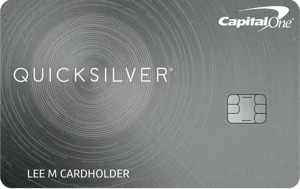
As one of the best student credit cards, it also provides new customers with a welcome promotional offer equal to $200 if the young adult or teenager using the credit card charges at least $500 on new purchases through the first three months after the account’s opening. You can also usually request a credit limit increase after six months.
While it has an annual fee, this credit card issuer does require good to excellent credit for approval, yet it offers one of the lowest spending requirements to earn the sign-up bonus. Additionally, it has a promotional 0% Annual Percentage Rate (APR) for the first 15 months from account opening (which becomes a variable rate between 15.49% – 25.49% after that).
Pros
- A good fit for students who do not have the time/ability to commit to keeping track of rotating categories.
- Does not have cash-back limits.
- Dissimilar to other competing cards, the Quicksilver card’s reward cash remains the same despite how the cardholder chooses to redeem its value.
2. Citi® Double Cash Card
Selected as One of the Best Credit Cards for Young Adults in Terms of Cash Back Offers
The Citi® Double Cash Card offers students and new credit users a 2% cash back reward earned as follows – 1% purchased with the 2nd-1% awarded when the purchases are paid.
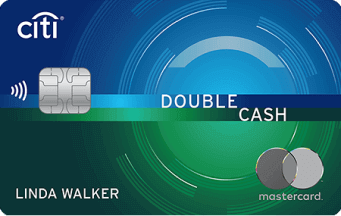
Note, however, the Double Cash card has no limits at all. This secured credit card is also budget-friendly, which fits most teenagers’ budgets, with no annual fees and a generous balance transfer option. Over time, you can establish a good credit history, enabling you to qualify for other cards with better rewards and benefits.
This credit card issuer has a $0 liability for fraudulent transactions, a guaranteed replacement card within 24 hours, and emergency cash, if applicable. The Citi® Double Cash Card’s simplicity – with no rotating categories to juggle each month or quarter – is ideal for young adults.
Pros
- It offers an Annual Percentage Rate (APR) of 0% for 18 months. (Interest Rate after that is between 13.99% – 23.99%).
- Cardholders can redeem earned rewards by direct deposit, check, or a statement credit. However, the cashback can be converted to ThankYou points (with a minimum of $25).
- It offers significant security, fraud, and identity theft protection.
3. Discover it® Student Cash Back
Selected as One of the Best Credit Cards for Students with Rotating Cash Back Categories for Bonuses
The Discover it® Student Cash Back card is another great option for credit cards for young adults and teenagers who want to max out the potential cash back earnings – but have shown the knack or ability to manage rotating categories – which is necessary to maximize rewards.
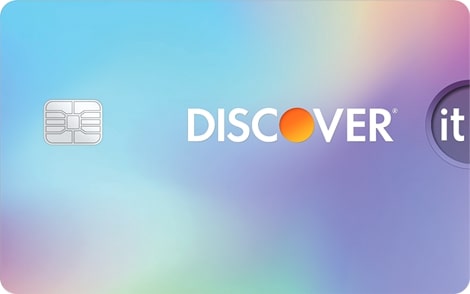
As its name suggests, this is one of the best student credit cards for beginners who want to build a positive history while avoiding paying an annual fee. It is marketed for new credit card users who need a sufficient history to meet standard underwriting criteria for credit card approvals.
However, it allows up to 5% cash back on specific categories that rotate each calendar quarter (maxing out at $1,500 and earning 1% after that), plus 1% on all other Discover it® Student Cash Back credit card purchases. It makes up by waiving foreign transaction fees.
Pros
- During the first year, Discover matches the credit card holder’s cash back dollar-for-dollar – an excellent freebie for any adult – young or old.
- It has no annual fee and even offers new account holders six months of a 0% Annual Percentage Rate (APR) and a discounted balance transfer Annual Percentage Rate (APR) of 10.99% for the same one-half-year period.
- The most valuable part of the card is that it offers new credit users the opportunity to build credit while learning to manage credit and earning cash-back bonuses.
4. Journey Student Rewards from Capital One
Among the Best Credit Cards for Students Studying Abroad That Offers Cash Back
The Capital One’s Journey Student Rewards credit card has been developed specifically for students. It is a low-maintenance, starter-type credit card that allows teenagers to build good credit scores. It offers cardholding young adults and students a 1% cash back for eligible purchases – on an unlimited basis.
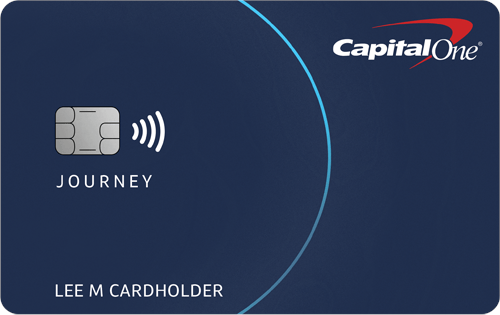
Even better, the cardholder is rewarded when (and if) the account is paid on time, as agreed. If this happens, the original 1% cash back earned increases by 25% to become 1.25% of each timely monthly payment. As a starter credit card, this is a good first option for building your history.
And while there is no annual fee (another budget-friendly plus) or a foreign transaction fee, this secured credit card also offers a sign-up bonus of one year of monthly streaming service credits equivalent to $60 – but note the perk must be utilized within the first 1.5 years of account opening.
Pros
- Parents can be confident that a replacement card will be issued to the student abroad in an emergency, along with a cash advance, when and if applicable.
- For students studying abroad, the Capital One’s Journey Student Rewards credit card charges no fees for foreign transactions.
- It provides significant security protections, including fraud liability coverage in which the cardholder bears zero financial responsibility if the Journey Rewards card is stolen or lost.
Starter Credit Cards for Young Adults
Here are some of the best starter credit cards for young adults:
Chase Freedom Unlimited
The Chase Freedom Unlimited Credit Card is great for young adults because it offers 1.5% cash back on all purchases. It also provides a 6.5% cash back on travel purchased through Chase Ultimate Rewards®, 4.5% cash back on drugstore purchases and dining at restaurants, and 3% on all other purchases.
All these cash back options are up to $20,000 spent in the first year. This makes this card ideal for young adults wanting daily spending rewards. It also has a 0% Intro APR for 15 months from account opening on purchases and balance transfers, then a variable APR of 20.24% – 28.99%.
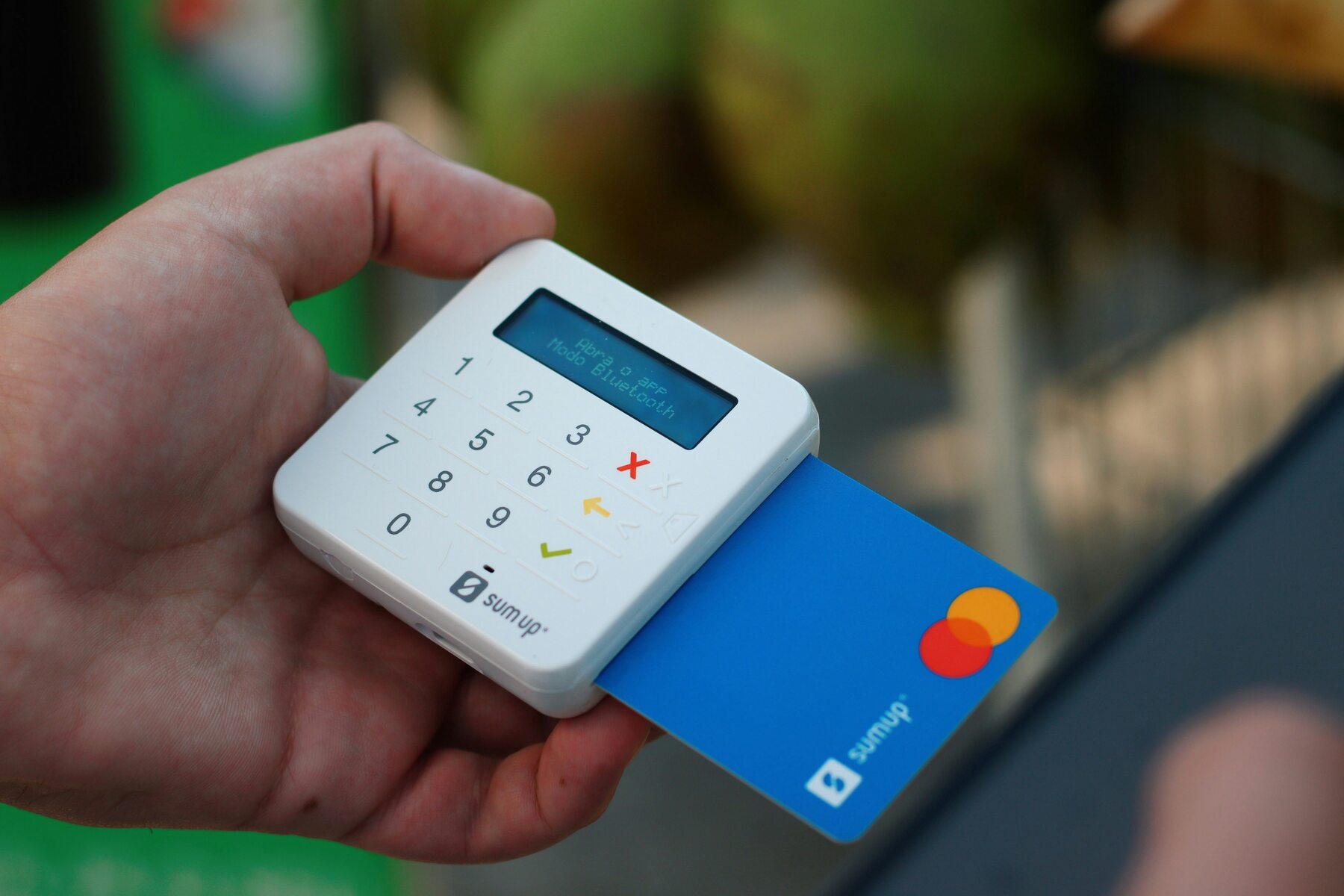
With no annual fee, this card lets you keep tabs on your credit health by granting free access to your latest score through the Chase Ultimate Rewards. This allows young adults to avoid debt accumulation and build a healthy history. However, be cautious about its 3% foreign transaction fee.
Discover it Student Chrome
The Discover it Student Chrome is a great choice for young adults with low credit scores who want to earn rewards as they build their credit. Perhaps the most exciting feature of this card is that it automatically matches all the cash back you’ve earned at the end of the year.
This dollar-for-dollar match helps you double all your cash-back rewards. For instance, $50 becomes $100, while $100 becomes $200.
Additionally, this card offers 2% cash back at gas stations and restaurants on up to $1,000 in combined purchases each quarter, plus 1% cash back on all other purchases. It has no annual fee and 0% intro APR on purchases for six months. Subsequently, a variable purchase APR of 18.24% – 27.24% applies.
Blue Cash Everyday® Card from American Express
The Blue Cash Everyday® Card from American Express is perfect for young adults who do a lot of grocery shopping. It offers 3% cash back on up to $6,000 spent annually at U.S. supermarkets, online retail purchases, and gas stations, then 1%.
It also offers $7 back each month if at least $12.99 is spent on the card on a subscription to The Disney Bundle. Aside from having a zero annual fee, the card offers 0% intro APR on purchases and balance transfers for 15 months from the account opening date.
After that, a variable APR of 19.24% to 29.99% applies. You can also win a $200 statement credit if you spend $2,000 in purchases in the first six months of getting your card.
Do Young Adults Need Credit Cards?
The question arises for young adults just beginning to gain financial independence: do they need credit cards? While cards can provide numerous advantages, they also have pitfalls to consider.
Here are a few benefits:
- They provide a convenient means of making online purchases.
- Responsible use of cards can help young adults build a positive credit, vital for future big purchases, such as homes or cars.
- Cards often come with rewards programs, offering cash back, travel points, or discounts on various purchases. These rewards can add up over time and contribute to cost savings.
- A credit card can act as a financial safety net during emergencies, providing immediate access to funds when unexpected expenses arise.
However, while cards offer many advantages, they pose significant risks, especially for young adults learning to manage their finances. The ease of swiping a student credit card can lead to overspending and debt accumulation due to high-interest rates and the need to pay an annual fee.
Therefore, whether teens need credit cards has no one-size-fits-all answer. To determine whether a credit card is necessary, young adults should evaluate their spending habits and financial goals, educate themselves about responsible credit card usage, and consider alternative options such as debit cards until they can manage credit effectively.

How to Introduce Credit Cards for Students and Young Adults
Preparing a child for each subsequent stage of life is the primary responsibility of parents, and this should include educating a teenager about the management of finances. How does a parent or guardian teach their child to use one of the best credit cards?
Before a parent begins an essential financial dialogue with a teenager (who, by the way, already thinks they know more than you and can teach you a thing or two about life), they must be vigilant and do their homework to find the best credit card for a teenager to build credit.
When talking about credit cards for teens, it is suggested that parents begin by having the answer to questions like –
- First, can minors have credit cards?
- Where can you find the best credit cards for students?
- Will the best credit cards for teenagers need a parent or guardian’s co-signature?
- Can minors have cards without parental permission?
- Which of the best credit cards to build student credit offers the best terms?
- What credit card can a minor get that offers some protection against overspending?
What Are the Pros and Cons of Credit Cards for Young Adults?
Credit cards can offer numerous advantages for young adults. However, they also have potential drawbacks.
Pros
- Building credit history: Using a credit card responsibly and making timely payments can help young adults establish an excellent history, which is important for future financial decisions such as buying a home or starting a business.
- Convenience: Despite having an annual fee, credit cards provide a convenient and secure way to make in-person or online purchases. They also eliminate the need to carry large amounts of cash and offer protection against fraudulent transactions.
- Emergency fund: Cards can serve as emergency funding when unexpected expenses arise.
- Rewards and perks: Many credit cards have rewards programs that offer cash back, travel points, or discounts on various purchases. Young adults can benefit from this by using their cards for everyday expenses and redeeming the rewards for savings or travel opportunities.
- Budgeting: Credit card statements provide a clear spending record, making it easier for young adults to track their expenses and create budgets. This can contribute to better financial management and awareness of spending habits.
Cons
- Debt accumulation: One of the most significant dangers of credit cards is the possibility of accumulating way more debt than they can handle.
- Credit score impact: Misusing credit cards, such as missing payments or carrying high balances, can negatively impact credit scores. This can hinder future borrowing opportunities and result in higher loan interest rates.
- Fees: Cards often come with many fees, such as annual fees, late payment fees, and cash advance fees. These charges can add up and eat into any potential rewards or benefits.
- The temptation to overspend: Credit availability can create a false sense of affordability, causing young adults to spend more than they can repay. This overspending can lead to a cycle of debt that becomes difficult to manage.
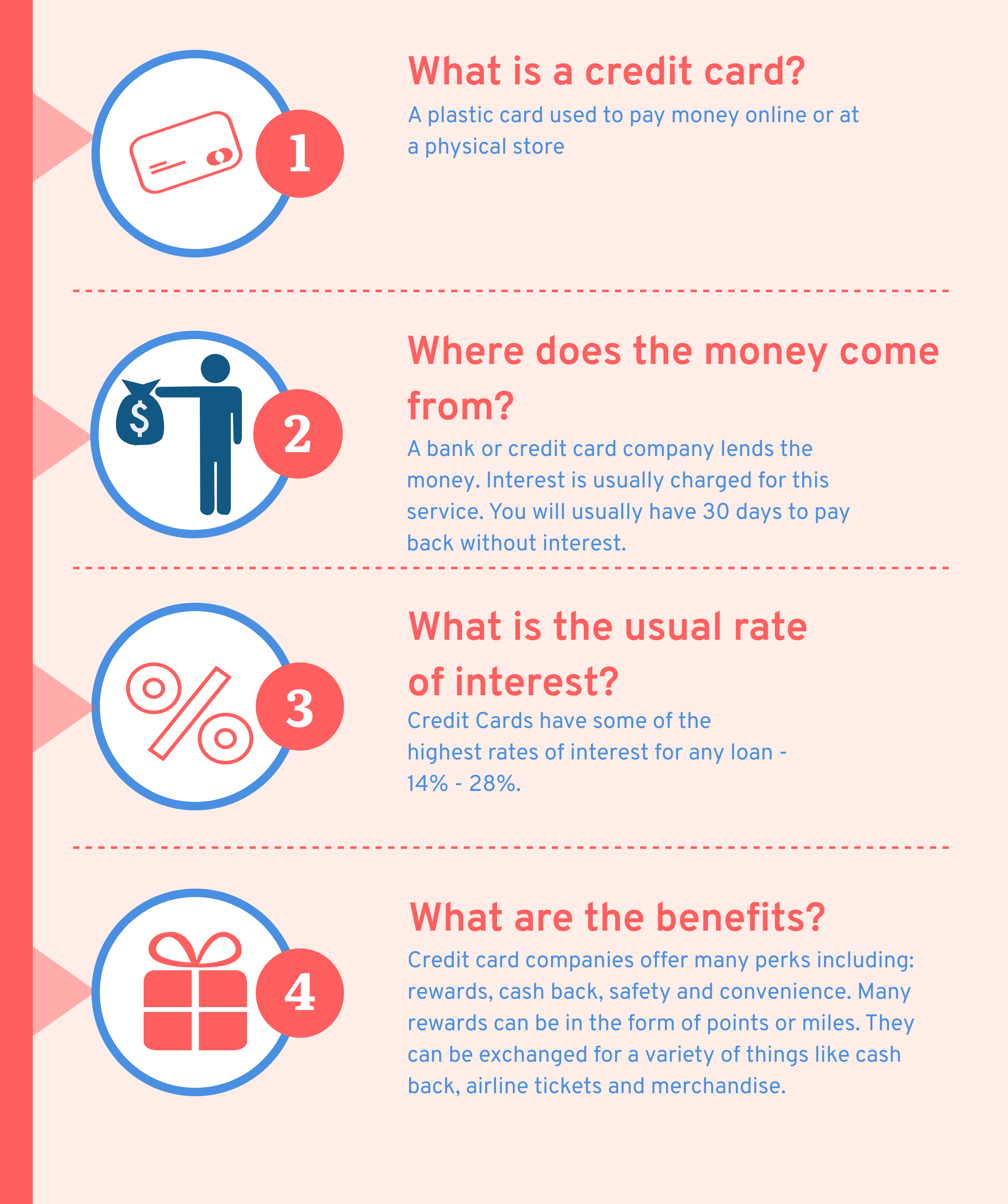
What Are the Benefits of Building Credit for Kids?
Once you have answered the important question – Can a child under 18 have a secured credit card? – the time to start talking to your children is as early as possible. While you may now know – What is the best credit for your teenager, can you trust that your child knows how to use the card or credit – conceptually and judiciously?
It is never too early to start teaching children the importance of money management, including establishing habits in building scores from credit card issuers.
Even the best starter credit card for a teenager can cause credit damage or overspending if the teenager needs to fully understand the essential concepts of saving, paying annual fee bills on time, and maintaining the highest credit score whenever possible.
What Are Ways to Build a Teen’s Credit?
Some of the best credit cards for teenagers begin with the teenager as an authorized user.
One of the simplest & safest ways to introduce debit or credit cards to a young adult or student is to give them the privilege of using the convenient payment methods – but to do so with ‘training wheels’ to protect them and their parents.
Allow an Authorized User Option
Smart banks recognize this parental dilemma and offer some of the best credit cards through the process known as the “authorized user” option. These authorized accounts are some of the best credit cards for teenagers and young adults because the authorized users effectively inherit the existing credit status – good or bad.
While an authorized account procedure can act as one of the best credit cards for students, it may be tempting for some young adults (and new credit card users) who tend to have limited impulse control.
Remember, the account cardholder is on the hook for every charge made to the account. Be sure you have sufficient comfort that your young adult or student has demonstrated enough maturity and self-discipline (in other life areas) before freely giving them this significant responsibility.
Some banks allow children as young as 13 to become authorized users, although each bank’s guidelines will differ. Some lending institutions do not even have an age requirement for authorized users on existing credit card accounts – so this option may be an intelligent choice for mature younger kids.
Confirm with the credit card issuer that the authorized user’s account activity will be included in repository reports – which banks do as a regular part of the business model.
Because without reporting, the authorized user method would not build the student’s credit – the ultimate goal of the entire exercise.
Most banks cannot limit an authorized user’s spending (independent of the account’s maximum limit).
What Should a Young Adult Look For in a Credit Card?
Choosing the right credit card as a young adult is crucial to shaping your financial journey. Here are several key factors to look for when selecting a credit card:

- Low fees and interest rates: Look for credit cards with low or no annual fees, late payment fees, and other charges. Additionally, compare the card’s Annual Percentage Rate (APR) for purchases and balance transfers. Avoid high-interest cards, as these can lead to debt accumulation if not appropriately managed.
- Credit building opportunities. For young adults building credit, opt for cards designed to help establish a positive history. These might be secured credit cards or cards tailored to those with sparse history. Also, check if the card issuer reports to major credit bureaus, which is crucial for building credit.
- Rewards and benefits: Look for cards with cash back, travel miles, points, or other rewards that align with your spending habits and lifestyle. Introductory bonuses and ongoing rewards programs can also provide added value.
- Introductory offers: Some cards offer introductory periods with 0% APR for purchases or balance transfers. These offers can be advantageous if you plan a significant purchase or transfer existing debt.
- Payment flexibility: Check if the card offers flexible payment options, such as customizable due dates or the ability to set up automatic payments, even on the annual fee. This can help you manage your finances more effectively.
- Customer service and support: Research the card issuer’s reputation for customer service. Access to responsive and helpful customer support can make managing your credit card easier, especially when dealing with issues or questions.
- No foreign transaction fees: If you travel internationally or purchase foreign currencies, consider a credit card that doesn’t charge foreign transaction fees to help you save money.
How to Compare Credit Cards for Young Adults
Comparing credit cards requires careful consideration of individual financial habits, goals, and preferences. Here are several key questions that young adults should ask themselves when comparing cards to determine the best fit for their needs:
What Are My Spending Habits?
Consider the frequency of your spending and the monetary size of your purchases. Do you tend to make frequent small purchases or larger occasional expenses? Also, do you want a daily credit card for everyday expenses or specific purposes like travel or entertainment?
Am I Prepared for Responsible Usage?
You must know how to use a card responsibly to avoid accumulating credit card debt, including the annual fee. Therefore, you must ask yourself if you are committed to staying within your means and paying the balance in full and on time each month.
What Are My Approval Odds?
Some credit cards are specifically designed for certain individuals. For instance, a card issuer that accepts people with limited credit history is more suitable for young adults. Therefore, research the card’s eligibility criteria and target audience to ensure you have a realistic chance of approval.
What Are My Goals for the Card?
Clearly define your objectives for obtaining a credit card. Are you looking to build credit, earn rewards, access financing, or a combination of these? Cards cater to various goals, so understanding your priorities will help narrow your options.
What Is the Credit Limit?
Understanding a card’s credit limit is crucial, especially for young adults with no history. While a higher limit can provide more flexibility, you must be careful to spend your money wisely and accumulate debt beyond your means. Also, look for cards with no credit score required to apply.
How Many Credit Cards Should I Have?
The number of cards you should have depends on your financial needs and management skills. While having a few cards can diversify your credit mix and offer different benefits, having too many may lead to overspending and debt accumulation, starting from the annual fee.
What Is the Easiest Credit Card to Get With No Credit?
Securing a credit card can be a little challenging for young adults with no history. Thankfully, some credit card types are specifically designed to cater to this situation.
Secured Credit Cards
Secured credit cards are the most accessible cards to obtain for those with no credit history. These cards require a refundable security deposit, which serves as collateral and determines your credit limit. The deposit reduces the risk for the card issuer, making it more accessible for individuals with limited or no credit.

Secured credit card issuers usually submit your payment history and credit report to major credit bureaus, allowing you to build or rebuild credit. Aside from having an annual fee, they typically come with higher interest rates and fees.
Unsecured Credit Cards
Some credit card companies offer unsecured credit cards to individuals without a history. These cards do not require a security deposit, although they tend to require a high annual fee.
They may have lower credit limits and fewer rewards than cards offered to those with established credit. Approval criteria can vary, so reviewing each card’s requirements is important before applying.
Student Credit Cards
Student credit cards are designed for college students with limited or no history. These cards have more lenient approval criteria and often offer features tailored to students, such as rewards for education-related expenses, no annual fees, and lower limits.
Some student cards may also provide educational resources to help young adults learn about responsible credit card usage and personal finance.
What Are Credit Card Tips for Young Adults?
Here are some tips to help young adults make the most of their credit cards:
- Start small: When obtaining your first credit card, consider starting with a card designed for individuals with no history. These cards often have lower credit limits which can help prevent overspending and help you build your credit over time.
- Understand the basics: Before using a credit card, understand its fundamental features, such as interest rates (APR), credit limits, fees, and rewards. You should also know the payment grace period of the annual fee and its terms and conditions to avoid surprises.
- Set a budget: Creating a budget involves determining how much you can afford each month and sticking to it. This means you should only use your credit card for planned purchases within your budget to avoid unnecessary debt.
- Pay in full and on time: While making minimum payments is tempting, it can lead to a cycle of debt due to high-interest rates. Therefore, paying the balance for annual or hidden fees in full and on time every month is essential. This prevents late fee charges and establishes a positive credit history.
- Monitor your statements regularly: Reviewing your credit card statements regularly helps you track your spending, detect any unauthorized transactions, and ensure the accuracy of charges.
- Try not to close accounts: Closing a credit card account might negatively impact your credit score, especially if it’s your oldest account. Instead of closing accounts, consider using them occasionally to maintain their positive impact on your history.
Related Questions
How Can I Increase a Teenager’s Chances of Approval for a Credit Card?
To increase your teenager’s chances of gaining approval for a credit card, a parent or guardian can offer to co-sign for their teenager. You may also consider choosing a card with an annual fee.
Should I Consider Adding a Debit Card or Prepaid Card?
Consider adding a debit or prepaid card since these are non-credit financial tools that can build credit for teenagers. A prepaid credit card is designed with its guardrails in that the limit of the card maxes. Meanwhile, a debit card is simply a card that allows instant access to existing funds.
How Do You Teach Teenagers to Use a Platinum Secured Credit Card?
Sit with your teenager and introduce them to the basics regarding credit. Teach them about the payment systems, the consequences of not paying the balance in full each month, and what happens to a credit score when they exceed the limit. Try to keep the conversation simple and practical.
Conclusion
Young adults and teenagers must establish a quality credit profile as early as possible. The best credit cards for 18 years olds (or, of course, older) will provide young adults with the ability to access the best lending and insurance rates and the likelihood of smoother financial experiences throughout their lives.
Related:
Best Credit Cards for Buying Furniture
